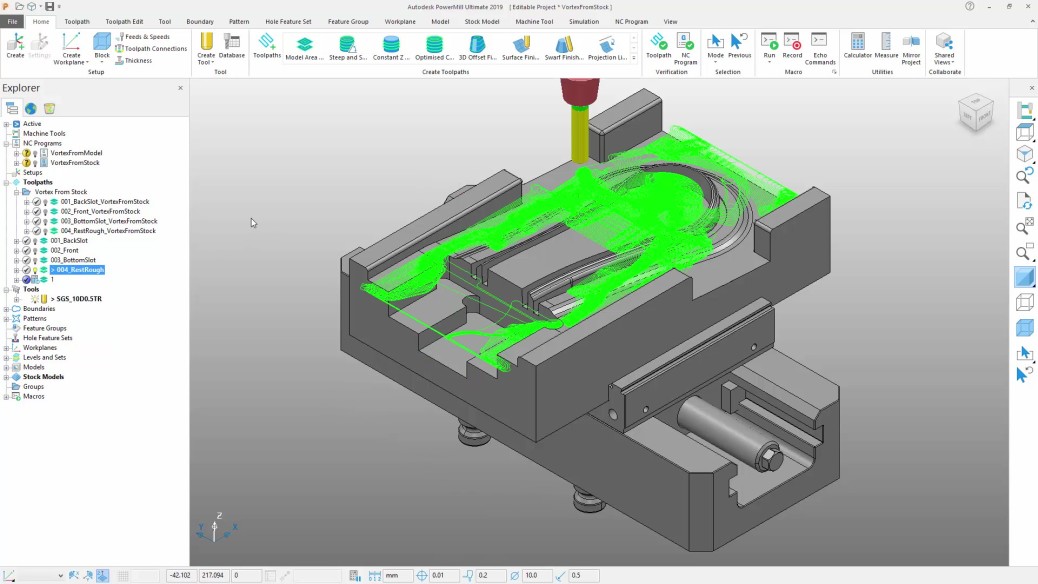
Is an integrated CAM or cloud-based CAD/CAM system right for you?
An integrated CAD & CAM system offers one complete system for design through manufacturing. It can be based on a traditional node locked system or be cloud-based. How do you know if an integrated CAD/CAM solution is right for you? It may be if the following features can benefit you.
Eliminate data translation issues
Eliminate the need to translate to a neutral file format such as STEP or IGES, or to purchase expensive data translators. When working within the same design system, there is never an issue with losing data, or corrupting data, during a translation process.
Although you may be able to purchase direct translators for other systems, they often will lag the CAD system for updates. This means that it may be weeks or months before your direct translator catches up to file format changes of the original CAD format.
Model associativity
Working within the same environment as the CAD design allows the CAM data to maintain some degree of associativity with the original model. Changes in the model will automatically be flagged and often automatically updated within the integrated CAD/CAM system.
Simplified Workflow
Eliminating the extra steps of data translation, and utilizing the same interface as the design allows for a simplified design to manufacture workflow. This can translate into reduced training time required, less IT resources maintaining multiple cad and CAM software packages and a more robust upgrade process.
Automate more of the manufacturing process
A complete CAD and CAM solution may offer a more complete manufacturing solution. Besides creating CAM cutter paths, it may output to other manufacturing processes such as 3DPrinters, probes, scanners and other manufacturing processes.
Full Design functions
Having access to full design capabilities is one of the biggest advantages of an integrated CAD/CAM solution. These design functions can be utilized to modify the model, create work holding or fixtures, or create extra “runoff” or addenda data on the model prior to manufacturing.
Direct editing of solid models can help modify fillets and create clearances on stamping dies. It can also quickly change portions of a mold for quickly editing gating and cooling.
Assembly functions can be used to quickly and easily insert vises, clamps, tables and other equipment used in manufacturing but not CNC machined.
Drawing functions with full dimensioning can create quick prints when necessary, for sharing with others.
Integrated validation tools
Complete CAD/CAM systems can also include, or have available, modules for validating designs prior to machining. Structural analysis can be calculated on a part to see if it will fail before it is created and tested. Plastic mold flow analysis can validate a mold design before the tooling is created.
Simulations of the calculated CNC cutter paths can be used to verify a collision-free run, even taking clamps, fixtures and vises into consideration.
Keep organized and work in teams
Full CAD/CAM systems have a form of file management and repository that can be used to ensure everyone is working on the latest design iteration. Utilizing a master model with associativity means that analysis, simulation and cutter path updates can happen faster than before, without version conflicts.
Share knowledge between departments
Design for manufacturability is a key component to being efficient. When design and manufacturing are utilizing the same system, they can share data and collaborate, ensuring that any concerns that may be brought up during manufacturing are raised earlier in the design process.
Cloud Functionality
Cloud-based CAM systems, like Fusion 360, can have most if not all of the benefits of an integrated CAD/CAM system. Since the parts are shared and accessed from the cloud, version control of the data is maintained automatically. If you update a part, and someone else has it open, they will get notice of a newer version and be updated accordingly.
Products like Fusion 360 include some analysis tools for stress or heat analysis.
Cloud-based CAD/CAM systems are best suited to collaboration. Anyone can be granted access to view and measure the part, and place notes on it during the design process, and ensure manufacturability.
Cloud-based systems are updated automatically, and typically have lower IT costs to maintain.
Take your model anywhere, and edit it or CNC program it, even on an airplane.
Conclusion:
As you can see, an integrated CAD/CAM solution offers many benefits over a non-integrated approach. Cloud-based CAD/CAM offers some distinct advantages on over that of integrated CAD/CAM. How do you know if this solution is right for you? Fortunately, you can download and try it for 30 days.
This post was originally published on Autodesk’s Resource Center. You can read the original and other’s like it here.



Add comment
Connect with: Log in
There are no comments